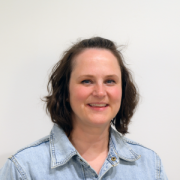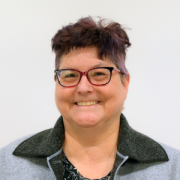Artists must provide digital images of their work when applying to the following programs:
Here are some tips to help you strengthen these support materials for your application.
General tips for photographing artwork
You should only submit good quality images that accurately illustrate what your work looks like. If you can’t provide good clear images, you lower your chances for success.
Generally speaking, good images are:
- in focus
- shot with adequate light
- shot with the correct white balance for your lighting conditions
- centred in the frame, focused in as close as possible with the art filling the frame
- taken against a plain neutral background without any visual distractions
- give a reasonably accurate impression of the colour, texture, and shape of the artwork
Tips for shooting 2-dimensional artwork
Centre the image and line up the camera on a tripod. Do not hand-hold the camera – too much shaking will result in a blurred image. Use a spirit level to determine if the camera is level. Check the cropping marks in the camera.
Make sure your monitor is colour-calibrated. Monitor the colour of light and make sure the lighting is even. Tungsten light is more cost-effective and is a warm light that can be adjusted. Feather lights off from the picture – this helps with preventing hot spots on the image. Point the light to the opposite side of the picture.
A colour checker held beside or in front of the picture helps control the lighting environment. Use a longer lens to limit the “yaw” factor. Using a 60mm lens gives you a 60th of a second shot and keeps the image sharp.
Turn the flash off so you don’t create “red eye” syndrome. Don’t shoot images with a glass front since the glass is too reflective.
Tips for shooting sculpture
- You have more flexibility in using lighting for shooting sculpture.
- You can show the texture of the object and more than one angle.
- Ensure you use your colour checker.
Archive your files
We recommend you burn a copy of your images on CD or save on USB drive for your own files, in addition to the copy for your application submission.
Specific requirements for art acquisition by application
All digital image files must be uploaded as an attachment into GATE (up to 4 MB). Images must be submitted as follows:
- when entering image name into the database, each image must be labelled with the artists’ name, title of the work and numbered as follows to ensure that the correct image corresponds with the artwork
- 1_Lastname_title
- 2_Lastname_title, etc.
- multiple images of the same artwork should be labeled and numbered as follows:
- 1a_Lastname_title
- 1b_Lastname_title, etc.
- mislabeled images will not be accepted. Do not title files image 1, image 2, etc.
- the AFA will not accept visual representations of artworks that do not match the artwork title, medium, size, and date associated with the submission. For new media or video artworks, image stills can be used to represent the work
All video and audio files must be Windows compatible, MP3 and MP4 files are preferred. Wherever possible, support material should be uploaded as an attachment into GATE (up to 4 MB)
If your support material is too large to submit, please mail a hard copy CD or USB to 10708 – 105 Ave, Edmonton, AB, T5H 0A1. Please include your first name, last name and project number on the CD or USB. Supplementary material sent by mail must be postmarked no later than 11:59 p.m. Mountain Time of the deadline date, unless the deadline falls on a statutory holiday or a weekend when it will be extended until the next working day.
We do not accept emailed attachments for this program, with the exception of New Media artworks that incorporate video. In these cases, you can email us a downloadable video file link. Please include in your subject line your first name, last name and project number (AFA-AAA…)
Specific requirements for project applications
More information
Review the guidelines for Visual Arts and New Media Individual Project Funding.


